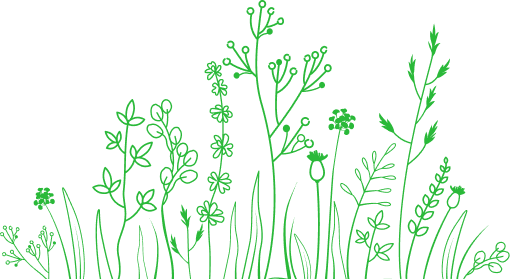Finger millet, also known as Ragi, is a powerhouse of nutrition that has been a staple in many parts of India and Africa for centuries. This tiny grain is often overshadowed by more common grains like wheat or rice, but its health benefits make it a highly valuable addition to your diet. Whether you're looking to improve your heart health, boost your metabolism, or simply enjoy a nutritious meal, finger millet is an excellent choice. Let’s explore the numerous health advantages of this ancient grain.
Finger millet is packed with essential nutrients, making it an excellent source of protein, fiber, and minerals. It contains high levels of calcium, iron, and magnesium, which are crucial for bone health, blood circulation, and overall well-being. One of the standout benefits of finger millet is its impressive calcium content, which is higher than that of milk or other grains like wheat or rice. A single serving can contribute significantly to your daily calcium requirements, supporting healthy bone structure and reducing the risk of osteoporosis.
Fiber is vital for a healthy digestive system, and finger millet is an excellent source of dietary fiber. The high fiber content aids in preventing constipation, improving bowel movement, and promoting the growth of healthy gut bacteria. Regular consumption of finger millet helps to regulate blood sugar levels, reducing the risk of diabetes. Its fiber-rich properties also help in controlling appetite by promoting a feeling of fullness, which can assist with weight management.
For those with gluten sensitivities or celiac disease, finger millet offers a natural, gluten-free alternative to wheat and other grains. Ragi is a safe and nutritious choice for individuals on a gluten-free diet. It can be used in various gluten-free recipes, such as flours, dosa, idli, and even as a porridge, making it versatile for gluten-free cooking. Incorporating finger millet into your meals ensures that you still get the benefits of a whole grain without the discomfort that gluten may cause.
Finger millet is rich in antioxidants, including polyphenols, which play a significant role in improving heart health. The high fiber and magnesium content of this grain help to reduce bad cholesterol (LDL) levels in the body, thereby lowering the risk of heart disease and stroke. The grain’s low glycemic index also makes it a great choice for managing blood sugar levels, preventing spikes that can lead to diabetes. Additionally, finger millet’s high potassium content helps to regulate blood pressure, further promoting cardiovascular health.
If you're looking to shed some extra pounds or maintain a healthy weight, finger millet can be your ally. Due to its high fiber content, finger millet helps in controlling hunger and reducing overall calorie intake. It digests slowly and provides lasting energy, which helps in maintaining fullness for a longer period. Incorporating finger millet into your meals can prevent overeating, making it an ideal choice for those on weight management or weight loss journeys.
The high antioxidant content in finger millet not only benefits internal health but also contributes to healthy skin and hair. The presence of amino acids and vitamins like vitamin E and B-complex vitamins helps in the production of collagen, which is essential for maintaining skin elasticity and youthfulness. Regular consumption of finger millet can reduce skin pigmentation, wrinkles, and other signs of aging. Furthermore, the grain’s iron and calcium content strengthen hair follicles, preventing hair loss and promoting hair growth.
Iron deficiency is a common health issue, particularly among women and children. Finger millet is an excellent source of non-heme iron, which helps in combating iron deficiency and preventing anemia. Consuming finger millet regularly can increase iron levels in the body, improving oxygen transport and boosting energy levels. Pairing finger millet with vitamin C-rich foods like citrus fruits can further enhance iron absorption, ensuring optimal health.
The low glycemic index of finger millet means it does not cause rapid spikes in blood sugar, making it an excellent choice for individuals with diabetes or those at risk. Its high fiber content helps to slow down the absorption of sugar into the bloodstream, ensuring better blood sugar control. In fact, studies have shown that finger millet can help manage type 2 diabetes by improving insulin sensitivity and reducing blood sugar levels.
As mentioned earlier, finger millet is a rich source of calcium—a mineral essential for maintaining strong and healthy bones. Unlike other grains that have a lower calcium content, finger millet provides a higher amount of calcium per serving, making it an excellent food choice for individuals looking to improve bone density. Regular consumption of this millet can help prevent bone-related conditions like osteoporosis and ensure better bone health, especially in older adults.
Incorporating finger millet into your diet is easy and can be done in various forms. You can use finger millet flour to make roti, idli, dosa, and porridge. It's also commonly added to smoothies or used as a base for energy bars. With so many ways to enjoy it, you can experiment and find your favorite way to include this nutrient-dense grain in your meals. Whether it's breakfast, lunch, or dinner, finger millet can be a versatile and nutritious addition to any meal plan.
Finger millet, or ragi, is not just a superfood; it’s a powerhouse of health benefits. From boosting heart health and aiding in digestion to supporting healthy skin and bones, this tiny grain can do wonders for your overall well-being. By incorporating finger millet into your daily diet, you can enjoy improved nutrition and better health outcomes. So, why wait? Start adding this ancient grain to your meals today and experience the wide range of health advantages it offers.
Read More: Looking for delicious recipes and tips on how to cook with finger millet? Check out our blog for more insights and healthy recipes to get started with this amazing grain!

